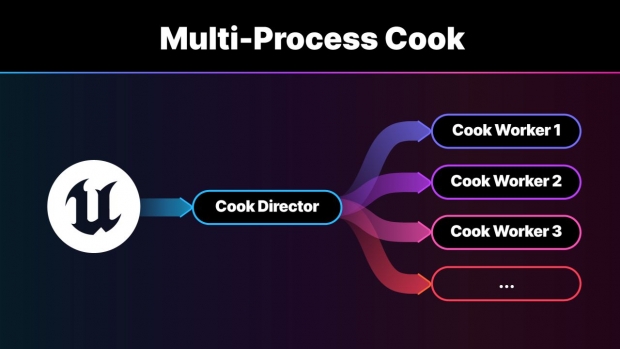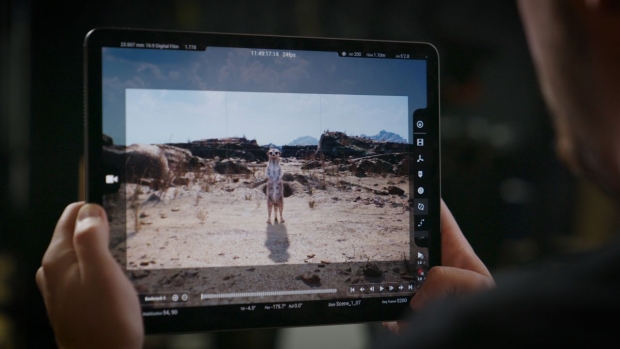Update boasts new experimental features, including Orthographic Rendering and cinematic-quality volumetric rendering using SVT, refined workflows and capabilities across Lumen, Nanite, Path, Tracing and new standards suite for the next-generation virtual production - within nDisplay.
 Today, Epic Games released Unreal Engine 5.3, boasting a wide range of updates to expand UE5’s functionality and potential for game developers and creators across industries. In addition to core rendering, developer iteration, and virtual production toolsets enhancements, UE5.3 introduces experimental new rendering, animation, and simulation features, offering extended creative workflows within the game engine.
Today, Epic Games released Unreal Engine 5.3, boasting a wide range of updates to expand UE5’s functionality and potential for game developers and creators across industries. In addition to core rendering, developer iteration, and virtual production toolsets enhancements, UE5.3 introduces experimental new rendering, animation, and simulation features, offering extended creative workflows within the game engine.
Here are the highlights of what’s new in Unreal Engine 5.3 – head to the Unreal Engine blog for more details.
Refinements to core UE5 rendering features:
Core UE5 rendering features are easier for developers to leverage at higher quality in games running at 60 fps on next-gen consoles; the improvements also offer higher-quality results and enhanced performance for linear content creators.
Nanite is faster for masked materials, including foliage, and can represent more ranges of surfaces with the new Explicit Tangents option. At the same time, Lumen with Hardware Ray Tracing now includes multiple reflection bounces, delivering faster console performance.
Other areas with advancements include Virtual Shadow Maps (VSM)— now production-ready—Temporal Super Resolution (TSR), Hair Grooms, Path Tracing, and Substrate.
Multi-Process Cook
- Developers can now leverage additional CPU and memory resources when converting content from the internal UE format to a platform-specific format, reducing the time it takes to get a cooked output from a build farm server or on a local workstation.
- Enabling Multi-Process Cook launches subprocesses that perform parts of the cooking work alongside the main process. Developers can select how many subprocesses they want to run on a single machine.
Cine Cam Rig Rail
- Filmmakers can emulate the workflow and results of traditional camera movement along tracks or on dollies with a new Cine Cam Rig Rail Actor, which provides more refined controls than the existing Rig Rail - including choreograph settings like camera rotation, focal length, and focus distance, at different control points along the path. It supports both in-editor and VCam workflows.
VCam enhancements
- VCam updates to the system include the ability to review takes directly on the iPad for faster iteration; simultaneously streaming different VCam output for different team members—for example, with camera controls for the camera operator, without for the director—facilitating collaborative VCam shoots; to record at a slower frame rate and playback at normal speed for easier capture of fast-moving action.
Experimental features
- New Experimental features will see further development in future releases. Users are invited to try the experimental features and provide feedback, but they are NOT recommended for production use yet.
Cinematic-quality volumetric rendering - Two new features
- Sparse Volume Textures (SVT) and Path Tracing of Heterogeneous Volumes introduce new capabilities for volumetric effects such as smoke and fire.
- Sparse Volume Textures store baked simulation data representing volumetric media and can be simulated in Niagara or imported from OpenVDB (.vdb) files created in other 3D applications.
In addition, more support for rendering volumes is now available as Experimental in the Path Tracer, offering the potential for high-quality volumetric rendering—including global illumination, shadows, and scattering—for cinematics, films, episodic television, and other forms of linear content creation directly in UE5.
Real-time use cases such as games and virtual production can also begin experimenting with SVTs for playback of volumetric elements. However, performance is limited at this time and dependent on the content.
Orthographic rendering
- The update introduced orthographic rendering for visualizing architecture and manufacturing projects and orthographic projections as a stylistic camera choice for games.
Multiple areas of UE5.3 have been targeted to achieve parity between perspective and orthographic projections. Most modern features of UE5 should work now, including Lumen, Nanite, Shadows, and Temporal Super Resolutions. Orthographic rendering is also available in the Unreal Editor, enabling users to make updates in a live setting.
Skeletal Editor
- The new Skeletal Editor provides animators with tools for working with Skeletal Meshes, including the ability to paint skin weights.
- For quick prototypes or final rigging, users can perform more character workflows in the Unreal Editor without requiring round-tripping to DCC applications – allowing for work in context and faster iteration.
Panel-based Chaos Cloth with ML simulation
Updates in Chaos Cloth bring more creative workflows directly to UE
- The new Panel Cloth Editor and new skin weight transfer algorithms and added XPBD (extended position-based dynamics) constraints as a basis for our future cloth generation in engine, providing a non-destructive cloth simulation workflow in which users can trade off speed for precision. In addition, the use of panel-based cloth can result in better-looking simulations.
- Cloth can also now be simulated and cached in engine using the new Panel Cloth Editor in conjunction with the ML Deformer Editor.
nDisplay support for SMPTE ST 2110
In preparation for the next generation of LED production stages, experimental support has been added to nDisplay for SMPTE ST 2110, utilizing NVIDIA hardware and Rivermax SDK, laying the groundwork for various hardware configurations and new possibilities for LED stages. For example, a new configuration uses a dedicated machine for each camera frustum, maximizing the potential rendering resolution, increasing frame rate, and allowing for more complex scene geometry and lighting than previously possible.
This solution can tackle challenges such as wider-angle lenses needing greater resolution and multi-camera shoots that stress current systems. It also implies lower latency in the system due to simplification of the signal chain.
Check out the Unreal Engine 5.3 Feature Highlights video:
These are just some of the new features and enhancements in Unreal Engine 5.3. Check out the release notes to see a full list of features.
Source: Epic Games














